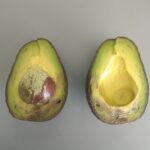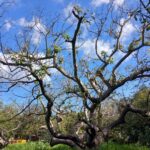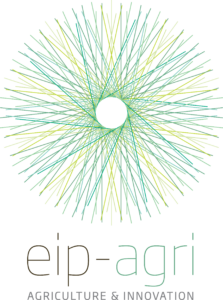Colletotrichum gloeosporioides
Symptoms
The initial symptom is the appearance of light brown spots. In the course of ripening the spots grow larger, darken and appear sunken. In overripe fruits, the infestation has progressed into the interior causing wet rot and the fruit is not affected.
Manage
In fields where the presence of the disease has been established, affected plant tissues such as mummified fruits and dead branches should be removed from the plantation. Appropriate pruning should be carried out to ensure better ventilation of the trees, particularly where a dense planting system has been chosen.
Area of observation
Kokkino Metochi Chania
Bibliography
Sepsis in the area around the base of the wrist (Neofusicoccum luteum)
Symptoms
The initial symptom of the disease is a dark brown or black rot in the area around the base of the wrist. As the wrist softens, the rot spreads to the rest of the wrist.
Manage
Removal of dead plant tissues that can contribute to the spread of the pathogen. Harvesting must be carried out under low humidity conditions and the tools used must be disinfected. It is useful to keep the stalk on the harvested fruits
Area of observation
Kokkino Metochi Chania
Bibliography
Verticillium (Verticillium dahliae)
Symptoms
Abrupt branch wilting, discoloration of wood vessels.
Manage
Cutting and burning of contaminated plant tissue. Healthy propagating material
Area of observation
Garden of Chania
Bibliography
Diaporthe foeniculina
Bibliography
Avocado root rot and tree necrosis (Phytophthora cinnamomi)
Symptoms
It attacks the root hairs and fine roots (rhizomes) that supply the plant with water and nutrients, causing them to rot, unlike other species of the genus Phytophthora that attack larger roots and the neck of trees. Macroscopically, blackening of the roots is observed, which then become brittle and eventually die. Usually the first visible symptom of the disease caused by P. cinammomi is the development of smaller than normal leaves (microleaves), which are chlorotic (or yellow) due to the inability to take up nutrients. Leaf loss occurs and the growth of new vegetation is limited. This, combined with the drying of small branches, results in sunburn on branches and stems due to insufficient shade. The crown appears withered even in conditions of sufficient soil moisture. Due to the interruption of anionic sap in the early stages of the disease, the carbon-to-nitrogen ratio changes in favour of carbon. As a result, a large number of small-sized fruits are often observed, which are unmarketable. Affected avocado trees deteriorate significantly and usually die sooner or later.
Manage
Efforts should be made to isolate the infected trees (e.g. by careful construction of furrows) or even destroy them, so that the remaining healthy trees are protected. In already infected trees, an attempt can be made to manage the disease using various chemicals such as fosetyl-Al and phosphonate solutions. Their use, however, requires caution to have any positive effect. For example, injection of phosphonates into the trunk must be done in the right way, at the right point in the germination cycle of the plant and if there is sufficient crown size of the tree to support the movement of the chemical within the tree. To prevent introduction of the pathogen, growers should: (1) Pay particular attention to the propagating material used and the source from which it is obtained. Nurseries that base plant protection against Phytophthora solely on chemical means only are only succeeding in helping the emergence of resistant strains and merely passing the disease outbreak into the field after planting. Perhaps a good practice on the part of growers wishing to plant new avocado seedlings would be to leave them for a period of a few months in quarantine in a place far from the plantation, ensuring of course that they are properly maintained and grown. In this way the seedlings will be checked for the development or otherwise of symptoms of the disease. (2) To restrict to the absolutely necessary the movements of machinery, men and animals in their nurseries and to take care even to disinfect the shoes of the workers. (3) To use agricultural tools and equipment (digging machines, fruit pickers, tractors, etc.) after thorough cleaning and disinfection, which must be carried out before entering the field. (4) Make, if necessary, necessary arrangements in the field to ensure that it is well drained and that rainwater or other water does not run off from fields adjacent to it.
Area of observation
Nio Chorio Apokoronas



















